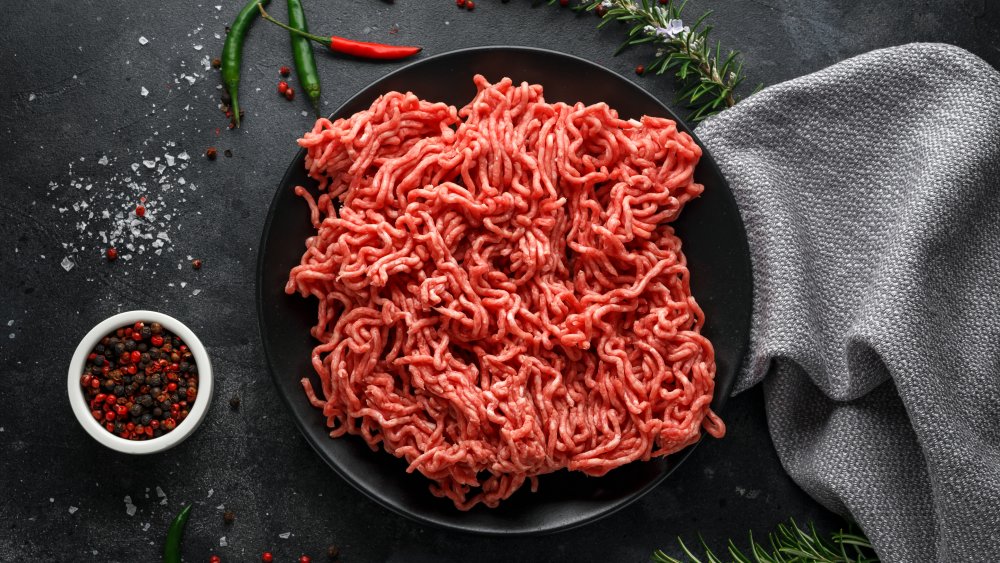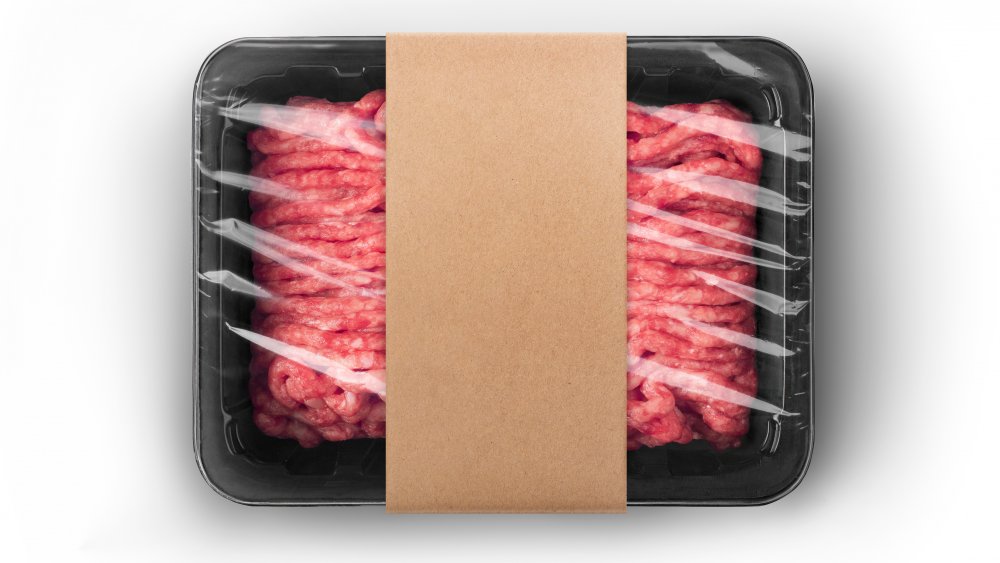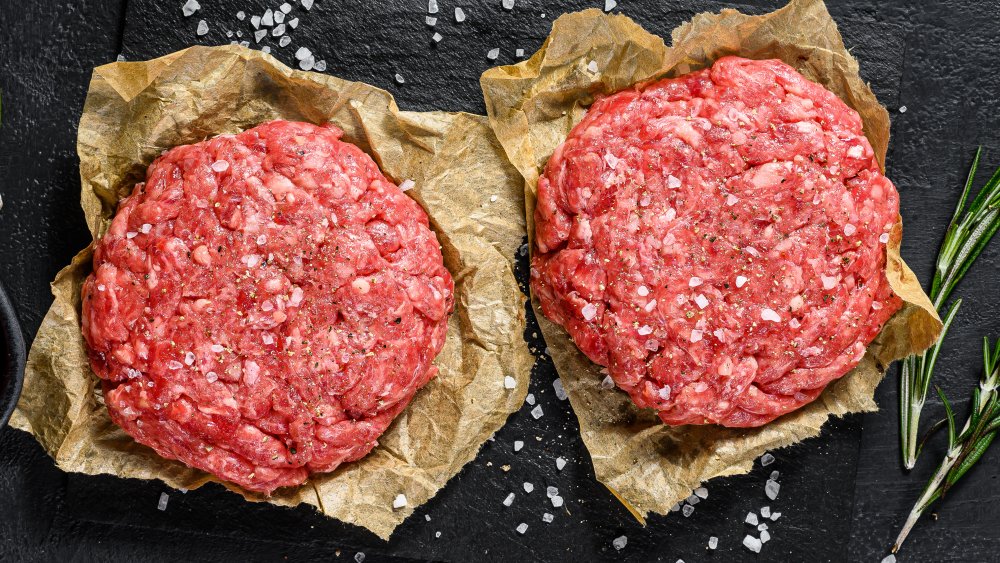This Is What Ground Beef Turning Brown Really Means
We've all been there: You grocery shop over the weekend, and then when you reach for the ground beef on Taco Tuesday, you find it has turned brown. Tossing it out is a bummer — not only for the environmentally conscious who try to avoid food waste, but also for those of us who don't like wasting money or having to figure out a backup dinner at the last minute. But there's good news: While the fading of the meat's red/pink hue can be off-putting, you may not have to throw it away; beef turning brown doesn't necessarily mean it has spoiled. Science tells us both what that brown/grey color means — and how to know whether it's still taco time or if it's safer to call for takeout.
Interestingly, the molecule responsible for giving beef its signature red color is the same one responsible for turning it brown: oxygen. When the meat first comes in contact with the air, it turns red/pink, according to the U.S. Department of Agriculture. However, once the meat has been exposed to that oxygen, it has a limited time before the same air that turned it red takes it to its next stage of oxidation, which is gray/brown. It's the same phenomenon that turns your avocado or sliced apple brown. And oxidized food isn't necessarily bad food, at least not right away.
How to tell if your ground beef it still okay to eat
If your ground beef has turned brown or gray in color, or if the outer layer is still pink but the inside has turned (or vice versa), there are a few other ways to tell if it is okay to use. First, check the expiration date. If the beef is still within its "good by" time period, it is more likely to be safe, as long as it has been transported and stored properly (Healthline). Next, smell it. If the beef has an unremarkable "normal" smell, it is likely not yet spoiled, but if it smells off to you, it's safer to throw it out. Last, feel the texture. If it is slimy or greasy in feeling, toss it. That could indicate bacteria growth and spoilage. If, however, the meat smells fine, feels fine, hasn't yet hit its expiration date, and has been handled properly, you are probably okay to make those tacos.
How to properly buy and store ground beef to help it last longer
If you're getting your meat at the butcher counter, select beef with a bright red cherry color, suggests Food Network. Packaged meat might have a darker purple-red color, and that's okay. That just means it hasn't been exposed to much oxygen because of its vacuum-seal packaging. Also check that the packaging doesn't contain excessive liquid and that it's properly sealed with no holes.
Once you get your beef home, what you plan to do with it will be a good guide on how best to store it, say the experts at Food Network. For freezing, plan the meals you'll be using it for and portion it out accordingly so you can repackage and freeze it in the correct portions. If you want to freeze it in its original packaging, you should only do so for about two weeks. If, however, you need to store it longer, wrap it in heavy duty aluminum foil, place in a freezer bag, and try to remove as much air as possible before freezing. It can safely be stored up to three to four months this way. Plan to use it in the next few days? place it on the lowest shelf of the fridge on a plate or tray to catch any juices that may drip to prevent cross-contamination.


